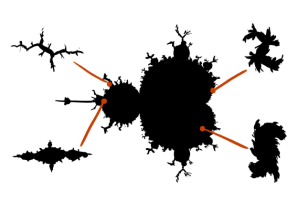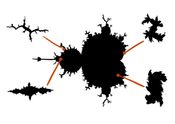Information
- Publication Type: PhD-Thesis
- Workgroup(s)/Project(s):
- Date: 2015
- Date (Start): October 2011
- Date (End): June 2015
- TU Wien Library:
- 1st Reviewer: Stefan Bruckner
- 2nd Reviewer: Eduard Gröller
- Rigorosum: 30. June 2015
- First Supervisor: Stefan Bruckner
Abstract
Visualization algorithms are parameterized to offer universality in terms of handling various data types, showing different aspects of the visualized data, or producing results useful for domain experts from different fields. Hence, input parameters are an important aspect of the visualization process. Their exploration and management are tasks which enable the visualization reusability, portability, and interdisciplinary communication.With increasing availability of visualization systems, which are suitable for a great variety of tasks, their complexity increases as well. This usually involves many input parameters necessary for the meaningful visualization of data. Multiple input parameters form parameter spaces which are too large to be explored by brute-force. Knowing the properties of a parameter space is often beneficial for improving data visualization. Therefore, it is important for domain experts utilizing data visualization to have tools for automatic parameter specification and for aiding the manual parameter setting.
In this thesis, we review existing approaches for parameter-space visualization, exploration, and management. These approaches are used with a great variety of underlying algorithms. We focus on their applicability to visualization algorithms. We propose three methods solving specific problems arising from the fact that the output of a visualization algorithm is an image, which is challenging to process automatically and often needs to be analyzed by a human.
First, we propose a method for the exploration of parameter-spaces of visualization algorithms. The method is used to understand effects of combinations of parameters and parts of the internal structure of the visualization algorithms on the final image result. The exploration is carried out by specifying semantics for localized parts of the visualization images in the form of positive and negative examples influenced by a set of input parameters or parts of the visualization algorithm itself. After specifying the localized semantics, global effects of the specified components of the visualization algorithm can be observed. The method itself is independent from the underlying algorithm.
Subsequently, we present a method for managing image-space selections in visualizations and automatically link them with the context in which they were created. The context is described by the values of the visualization parameters influencing the output image. The method contains a mechanism for linking additional views to the selections, allowing the user an effective management of the visualization parameters whose effects are localized to certain areas of the visualizations. We present various applications for the method, as well as an implementation in the form of a library, which is ready to be used in existing visualization systems.
Our third method is designed to integrate dynamic parameters stored during a multiplayer video game session by the individual participating players. For each player, the changing parameter values of the game describe their view of the gameplay. Integrating these multiple views into a single continuous visual narrative provides means for effective summarization of gameplays, useful for entertainment, or even gameplay analysis purposes by semi-professional or professional players. We demonstrate the utility of our approach on an existing video game by producing a gameplay summary of a multiplayer game session. The proposed method opens possibilities for further research in the areas of storytelling, or at a more abstract level, parameter integration for visual computing algorithms.
Additional Files and Images
Weblinks
No further information available.BibTeX
@phdthesis{mindek-thesis,
title = "Interactive Integrated Exploration and Management of
Visualization Parameters",
author = "Peter Mindek",
year = "2015",
abstract = "Visualization algorithms are parameterized to offer
universality in terms of handling various data types,
showing different aspects of the visualized data, or
producing results useful for domain experts from different
fields. Hence, input parameters are an important aspect of
the visualization process. Their exploration and management
are tasks which enable the visualization reusability,
portability, and interdisciplinary communication. With
increasing availability of visualization systems, which are
suitable for a great variety of tasks, their complexity
increases as well. This usually involves many input
parameters necessary for the meaningful visualization of
data. Multiple input parameters form parameter spaces which
are too large to be explored by brute-force. Knowing the
properties of a parameter space is often beneficial for
improving data visualization. Therefore, it is important for
domain experts utilizing data visualization to have tools
for automatic parameter specification and for aiding the
manual parameter setting. In this thesis, we review
existing approaches for parameter-space visualization,
exploration, and management. These approaches are used with
a great variety of underlying algorithms. We focus on their
applicability to visualization algorithms. We propose three
methods solving specific problems arising from the fact that
the output of a visualization algorithm is an image, which
is challenging to process automatically and often needs to
be analyzed by a human. First, we propose a method for the
exploration of parameter-spaces of visualization algorithms.
The method is used to understand effects of combinations of
parameters and parts of the internal structure of the
visualization algorithms on the final image result. The
exploration is carried out by specifying semantics for
localized parts of the visualization images in the form of
positive and negative examples influenced by a set of input
parameters or parts of the visualization algorithm itself.
After specifying the localized semantics, global effects of
the specified components of the visualization algorithm can
be observed. The method itself is independent from the
underlying algorithm. Subsequently, we present a method for
managing image-space selections in visualizations and
automatically link them with the context in which they were
created. The context is described by the values of the
visualization parameters influencing the output image. The
method contains a mechanism for linking additional views to
the selections, allowing the user an effective management of
the visualization parameters whose effects are localized to
certain areas of the visualizations. We present various
applications for the method, as well as an implementation in
the form of a library, which is ready to be used in existing
visualization systems. Our third method is designed to
integrate dynamic parameters stored during a multiplayer
video game session by the individual participating players.
For each player, the changing parameter values of the game
describe their view of the gameplay. Integrating these
multiple views into a single continuous visual narrative
provides means for effective summarization of gameplays,
useful for entertainment, or even gameplay analysis purposes
by semi-professional or professional players. We demonstrate
the utility of our approach on an existing video game by
producing a gameplay summary of a multiplayer game session.
The proposed method opens possibilities for further research
in the areas of storytelling, or at a more abstract level,
parameter integration for visual computing algorithms. ",
address = "Favoritenstrasse 9-11/E193-02, A-1040 Vienna, Austria",
school = "Institute of Computer Graphics and Algorithms, Vienna
University of Technology ",
URL = "https://www.cg.tuwien.ac.at/research/publications/2015/mindek-thesis/",
}


 Dissertation
Dissertation
